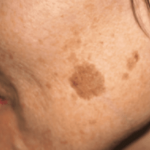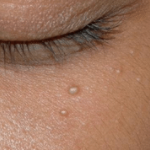
Cryosurgery (using CryoPen™)
the most innovative, technologically advanced instrument used for cryosurgery on the market today.
treating a whole range of different skin lesions from our private clinic in westerham, kent.
The CryoPen™ is the most innovative, technologically advanced instrument used for cryosurgery on the market today.
CryoPen™ can treat a whole range of different skin lesions including:
Skin tags
Freckles & pigmented lesions
Age/liver spots
Verrucae
Warts
Seborrheic Warts
Cherry angioma
Milia
What is Cryotherapy?
Cryotherapy is the use of extreme cold produced by liquid nitrous oxide which creates a fast, effective and safe solution for REMOVAL OF unwanted skin lesions.
The CryoPen™ is an FDA and CE registered advanced cryotherapy innovation which delivers a fine pinpoint spray of liquid nitrous oxide at a constant temperature of -89 degrees under high pressure which allows the clinician to work within millimetre precision. This allows the nitrous oxide to be delivered directly to the treated area and not to the healthy surrounding tissue, which prevents any pain during treatment.
CryoPen™ offers the ideal treatment for:
-

SKIN TAGS
-

Solar lentigines (Age/Sun Spots)
-

MILIA
-

Seborrhoeic Keratoses
-

Cherry Angiomas
-

WARTS
-

VERRUCAS
How does cryosurgery work?
The nitrous oxide destroys the tissue by freezing the inter-cellular fluid in a matter of seconds, forming ice shards and crystals which rupture the membrane, thereby destroying the cell. That means there will be no collateral damage to healthy tissue.
Is there pain with the procedure?
No, there is often a mild sensation similar to a stinging nettle on the skin when the nitrous oxide reaches the bottom of the lesion. There might be a slight stinging sensation for a few minutes after treatment and the area may ITch slightly for about 10 minutes post procedure. Most patients get an anaesthetic effect from the extreme freezing temperatures therefore do not feel much at all.
What does the area look like after treatment?
During the procedure, the area freezes and turns white. After this white area thaws, a flushing occurs and the area will turn red AND A mark will form. After 2-24 hours after being frozen the red mark may turn into a blister which could take a few days to dissolve, however this is very rare. A crust will form over the lesion, which typically, after about 10 to 14 days, will fall off and the skin will then be healed. The skin may appear lighter in colour or pink, which then returns to its normal colour over a period of a few weeks. Lesions treated on the legs often take a little more time to heal.
For larger and deeper lesions, a second crust may form making the healing time slightly longer.
Although it is best to try to leave the treated area uncovered, a plaster or simple dressing may be applied if it is in an area which may lead to rubbing and aggravation. It is important not to pick at the crust as this may lead to scarring.
Will there be scarring?
Rarely. Both hyperpigmentation (darkening of the skin) and hypopigmentation (lightening of the skin) may occur temporarily after cryotherapy. Both generally last for a maximum of a few months. Pigment change is more common in darker skin types.
What are the benefits of the Cryopen treatment?
The treatment is very quick, usually taking a few minutes
Sterile procedure – No incision, no bleeding, no risk of infection
No down time
The treatment is virtually painless
Highly effective
Cryopen uses state of the art cooling technology that doesn’t need dangerous cryogenic gases
No anaesthetic is needed
How permanent is the cure?
For most lesions, cryosurgery is a permanent removal. Some lesions are harder to remove than others. In more delicate places e.g. the eye area, a shorter freeze time with a repeat procedure may be required to get a final result with the least damage to the surrounding skin. In other instances, a deep lesion e.g. a verruca or a wart may take several aggressive treatments to get final results
What types of lesions should not be frozen?
All melanomas and recurrent basal cell carcinomas. Any suspicious skin lesion should always be checked by a medical professional before STARTING treatment.
Can anyone have cryosurgery?
Yes, typically most people can have cryosurgery, however a consultation will be carried out prior to any treatment as there are some instances where cryosurgery may not be suitable for you.
What if I have darker skin?
Repeated short freezing cycles of 3 to 6 seconds at two-week intervals are recommended if you have a darker skin type. For very dark skinned, you may not want to have cryosurgery, as it can kill the melanocytes around the treated area, making the skin in that area lighter.
How much does the treatment cost?
Treatments start at £50
Additional lesions can be added to your session at a lower cost (£25 per lesion dependant on size)
There are also packages available for larger warts and verrucae that will require multiple sessions
Prices can be given upon consultation (consultations are free)


